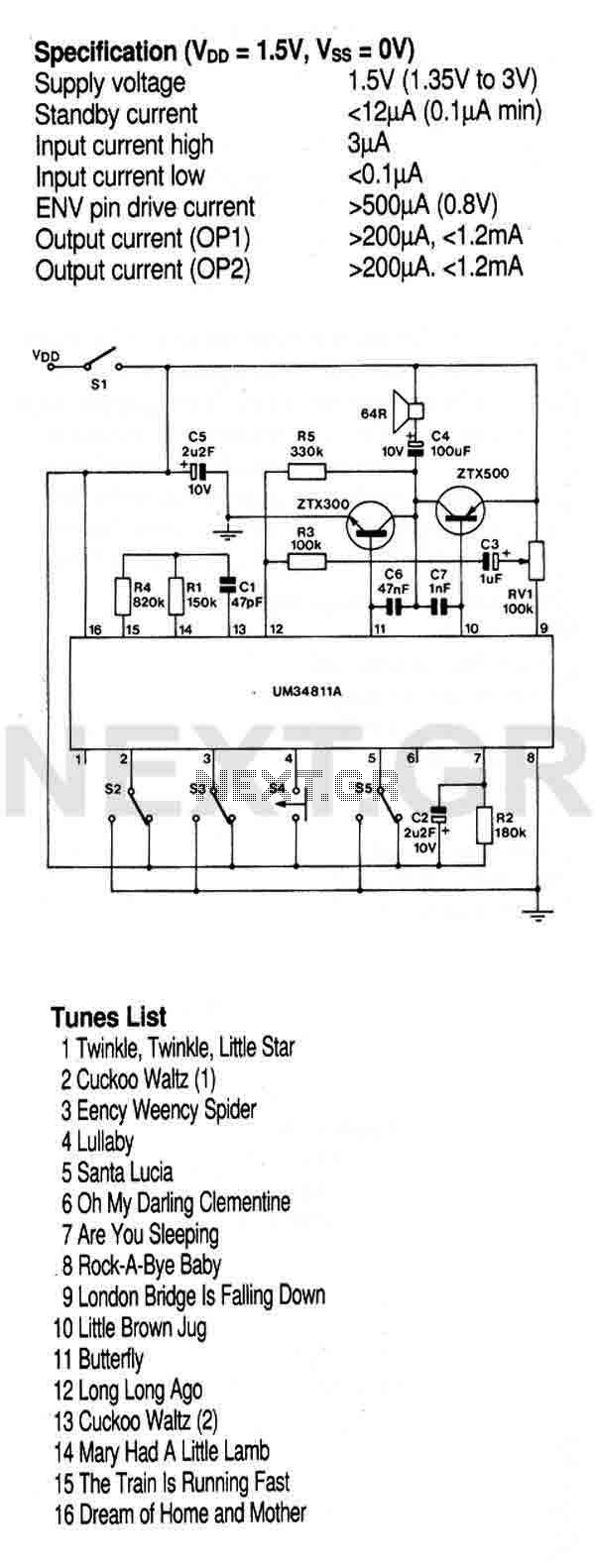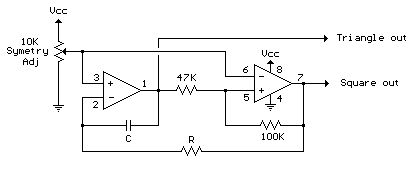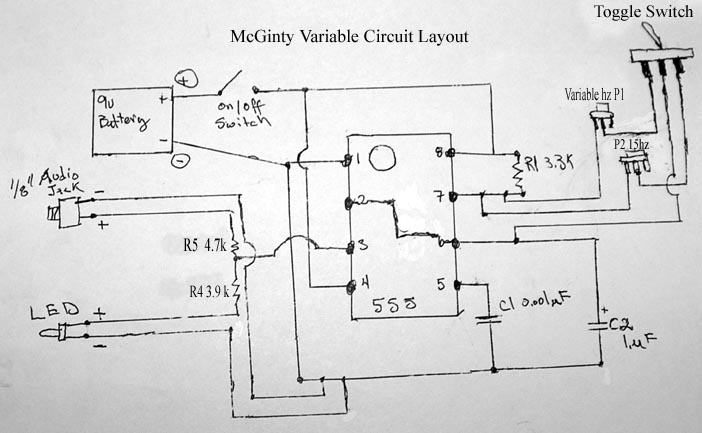
Multi-Instrument Melody Generator UM34811A

This circuit utilizes a preprogrammed multi-instrument melody generator integrated circuit (IC), which features a 512-note memory capable of producing 16 distinct tunes. The extensive control options allow for the playback of all tunes in a loop or stopping at the end, as well as the ability to play a single tune in a loop or stop at the end. The tunes are preprogrammed with one of three instrument sounds: piano, mandolin, or organ, utilizing the on-chip envelope generator.
The circuit design incorporates a melody generator IC that serves as the core component, connected to a power supply, typically a battery or DC source, to provide the necessary voltage and current for operation. The IC interfaces with a microcontroller or control switches that allow users to select between the different tunes and playback modes.
The output from the melody generator is routed to an audio amplifier to drive a speaker or piezo buzzer, which converts the electronic signals into audible sound. The envelope generator within the IC shapes the sound characteristics, allowing for dynamic control over the attack, decay, sustain, and release phases of each note, thereby enhancing the auditory experience.
Control facilities may include push buttons or a rotary switch for selecting tunes and modes, with additional circuitry to provide visual feedback, such as LEDs indicating the selected tune or playback status. An optional filter circuit can be added to modify the tone quality further, providing more versatility in sound output.
Overall, this circuit is suitable for various applications, including toys, educational devices, and decorative sound modules, offering an engaging auditory experience through its multi-instrument capability and user-friendly controls.This circuit is based on a preprogrammed multi-instrument melody generator IC, containing a 512-note memory capable of generating 16 tunes. The comprehensive control facilities enable playing - all tunes repeatedly or stopping at the end, - or one tune repeatedly or stopping at the end.
Tunes are preprogrammed with one of three instruments, sounds: the piano, mandolin or organ using the on-chip envelope generator.
The circuit design incorporates a melody generator IC that serves as the core component, connected to a power supply, typically a battery or DC source, to provide the necessary voltage and current for operation. The IC interfaces with a microcontroller or control switches that allow users to select between the different tunes and playback modes.
The output from the melody generator is routed to an audio amplifier to drive a speaker or piezo buzzer, which converts the electronic signals into audible sound. The envelope generator within the IC shapes the sound characteristics, allowing for dynamic control over the attack, decay, sustain, and release phases of each note, thereby enhancing the auditory experience.
Control facilities may include push buttons or a rotary switch for selecting tunes and modes, with additional circuitry to provide visual feedback, such as LEDs indicating the selected tune or playback status. An optional filter circuit can be added to modify the tone quality further, providing more versatility in sound output.
Overall, this circuit is suitable for various applications, including toys, educational devices, and decorative sound modules, offering an engaging auditory experience through its multi-instrument capability and user-friendly controls.This circuit is based on a preprogrammed multi-instrument melody generator IC, containing a 512-note memory capable of generating 16 tunes. The comprehensive control facilities enable playing - all tunes repeatedly or stopping at the end, - or one tune repeatedly or stopping at the end.
Tunes are preprogrammed with one of three instruments, sounds: the piano, mandolin or organ using the on-chip envelope generator.





